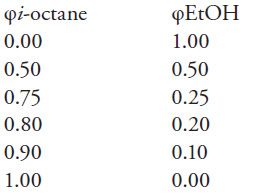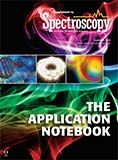Volume Fraction Determination of Ethanol in Splash-Blended Fuel Mixture
Application Notebook
There are two primary methods of blending ethanol into gasoline: match blending and splash blending. Match blending aims to achieve some specified boiling point for the mixture and is primarily done with aromatics, resulting in a dirtier emission profile versus splash blending. Splash blending is the primary method used in the United States and is based on percent volume, specifically aiming to achieve 10% ethanol by volume in the final mix (Environmental and Energy Study Institute, 2014). In this study, we look at the Ocean Optics MZ5 MIR Spectrometer's ability to determine volume fraction of ethanol in a splash-blended fuel mixture using MIR spectroscopy.
Experimental Setup
In the world of fuel octane ratings, the 0-mark is set by n-heptane while the 100-mark is set by i-octane, also known as 2,2,4-trimethylpentane (Compound Interest, 2016). Focusing on the latter, mixtures were made using i-octane (99.8%) and 200-proof ethanol from Millipore Sigma. The following volume fractions were prepared:
Table I.

Sample fluids were placed onto the crystal and measured. The MZ5's Mirror software saved the processed absorbance spectra.
The MZ5-MIR-ATR spectrometer offers excellent spectral response from 910-1810 cm-1 and is a robust measurement system for petroleum products and general process organics. Its simplified fixed-crystal design eliminates fiber connections and the movement/vibrational issues that come with their use.
Results
Figure 1 shows the resulting spectra for the ethanol mixtures described in Table I, along with some explanations for the activities and how they relate to the organic structures.

Figure 1: Absorbance of i-octane/EtOH mixtures.
Traditional Absorbance Model
The ethanol activity is clearly the dominant influencer to these spectra, which is highly useful in determining its concentration both in the lab and on the process line. While there are two regions of large alcohol activity, the C-O stretch band is both the largest and the most independent of the i-octane profile. Plotting the volume fraction versus this absorbance trend provides a strong correlation (Figure 2).

Figure 2: Absorbance trend of C-O stretch band.
Conclusion
The MZ5 is more than a spectrometer-it is a window into the molecular structures and concentrations of the chemicals in your process stream. In addition, Ocean Optics can provide users with algorithm development and machine learning tools that derive additional insight from the spectral data the MZ5 collects. Tools can be developed and refined to handle complex fuel mixtures and account for interference issues to provide readings that are robust and trusted.

Ocean Optics
8060 Bryan Dairy Rd., Largo, FL 33777
tel. (727) 733-2447
Website: www.OceanOptics.com


.png&w=3840&q=75)

.png&w=3840&q=75)



.png&w=3840&q=75)



.png&w=3840&q=75)








